Accounting Top 100 Social Media Leaderboard
Accounting Web
AUGUST 7, 2020
Sales Tax Accounting Top 100 Social Media Leaderboard.

Accounting Web
AUGUST 7, 2020
Sales Tax Accounting Top 100 Social Media Leaderboard.

Andrew Stolz
AUGUST 7, 2020
Definition of the Agency Problem. Within corporate finance, the agency problem is considered as the conflict of interest between the company’s managers and its stockholders. This conflict occurs when personal interests are given a priority over the professional duties each party needs to fulfill. The core of the conflict is that managers want higher compensation, and shareholders want higher profits.
This site is protected by reCAPTCHA and the Google Privacy Policy and Terms of Service apply.

Cooley M&A
AUGUST 3, 2020
It is a reasonable extrapolation – and we are nothing at Cooley if not wildly reasonable – that more operating companies are considering going public through a merger with a SPAC (commonly referred to as a backdoor IPO) since the beginning of time. There have been some great examples of successful SPAC transactions and more on the way, and the SPACraze has reached 2019 Direct Listing fever pitch levels.

Andrew Stolz
AUGUST 6, 2020
Definition of Compound Interest. Compound interest is the interest on the initial principal as well as the interest from the prior periods. . It is also referred to as interest on interest. With the same period of time, the sum of compound interest is always greater than simple interest because simple interest is the interest only on the initial value.

Speaker: Susan Spencer, Principal of Spencer Communications
Intent signal data can go a long way toward shortening sales cycles and closing more deals. The challenge is deciding which is the best type of intent data to help your company meet its sales and marketing goals. In this webinar, Susan Spencer, fractional CMO and principal of Spencer Communications, will unpack the differences between contact-level and company-level intent signals.

Andrew Stolz
AUGUST 6, 2020
Definition of Optimal Capital Structure. The optimal capital structure of a firm is the right combination of equity and debt financing. It allows the firm to have a minimum cost of capital while having the maximum market value. The lesser the cost of capital, the more the market value of the company. Debt financing may have the lowest cost, but having too much of it would increase risks to the shareholders.

Andrew Stolz
AUGUST 6, 2020
Definition of Capital Budgeting. When businesses want to buy new long term assets such as new machinery or start a new project, it is crucial to consider if it would be worth it or not. . Companies only have limited resources, so capital budgeting helps them prioritize the projects. Capital budgeting includes making decisions on implementing new projects, new plants, new equipment, and everything else that the company would spend on.
Business Valuation Zone brings together the best content for business valuation professionals from the widest variety of industry thought leaders.

Andrew Stolz
AUGUST 6, 2020
Definition of the Gordon Growth Model. The Gordon growth model, or GGM, is used to calculate the intrinsic value of a stock from future dividends. The model only works for companies that pay out dividends, which have a constant growth rate. What Impacts the Gordon Growth Model? The required rate of return . Dividend . Dividend growth rate . How to Calculate the Gordon Growth Model?

Andrew Stolz
AUGUST 6, 2020
Definition of the Modigliani-Miller Theorem. The theory suggests that a company’s capital structure and the average cost of capital does not have an impact on its overall value. . The company’s value is impacted by its operating income or by the present value of the company’s future earnings. It doesn’t matter whether the company raises capital by borrowing money, issuing new shares, or by reinvesting profits in daily operations.
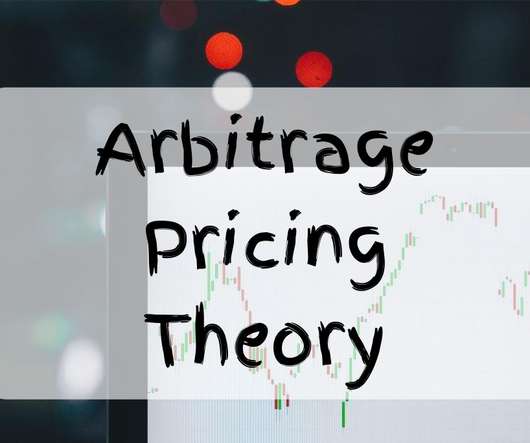
Andrew Stolz
AUGUST 6, 2020
Definition of the Arbitrage Pricing Theory. The Arbitrage Pricing Theory is a method used to estimate the returns on assets and portfolios. It is a model based on the linear relationship between an asset’s expected risk and return. The model projects how changes in macroeconomic variables affect an asset’s returns. These variables include inflation , changes in interest rates, exchange rates, etc.
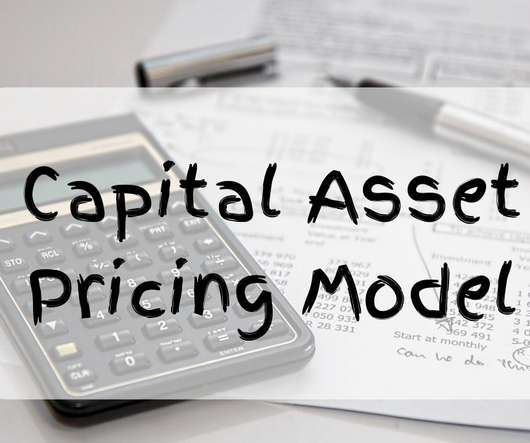
Andrew Stolz
AUGUST 5, 2020
Definition of Capital Asset Pricing Model. CAPM is a model used by investors to estimate the expected return of an asset. It helps an investor understand what to expect to earn in relation to the risk-free rate and the market return. CAPM assumes that the minimum a rational investor would earn is the risk-free rate by buying the risk-free asset. If an investor moves money from the risk-free asset into the stock market, they should expect to earn a return in excess of the risk-free rate, what is

Speaker: Wayne Spivak - President and Chief Financial Officer of SBA * Consulting LTD, Industry Writer, and Public Speaker
The old adages that "cash is king" and "you can’t spend profits" still hold true today. But however well-known these sayings might be, it requires a change in mindset to properly implement a cash flow management system that predicts your business's runaway as accurately as possible. Key to this new mindset is understanding the difference between the Statement of Cash Flows, a historical look at the source and uses of cash, and the Cash Flow Statement, which uses transaction history and forward-l

Andrew Stolz
AUGUST 5, 2020
Definition of Future Value. It is the value of a current asset at a specific time in the future calculated based on an assumed growth rate. The value of money includes time value; therefore, the future value is expected to be greater than the present value of the investment, considering the growth in investment. What Impacts Future Value? Factors such as inflation and the rate of return affect the value of money.

Andrew Stolz
AUGUST 5, 2020
Definition of Inflation. In simple terms, inflation is when the prices of goods and services increase over time. While the prices of goods and services increase, the purchasing power or value of money decreases. What Impacts Inflation? The two main things that can impact inflation are the wages people receive and the prices of raw materials. When wages increase, we experience inflation; when the prices of raw materials go up, we experience inflation.
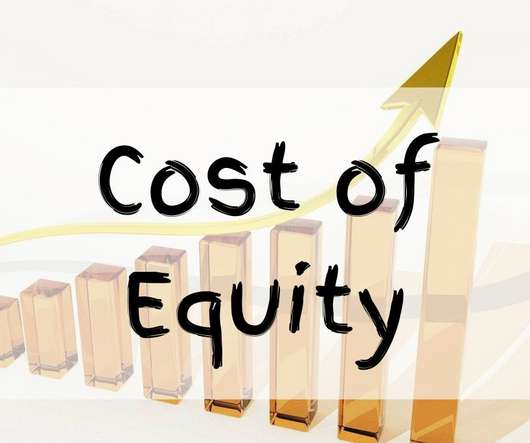
Andrew Stolz
AUGUST 5, 2020
Definition of the Cost of Equity. To compensate for the risks that shareholders take, firms pay them in return. The theoretical return the firm pays its equity investors (shareholders) is known as the cost of equity. In other words, the cost of equity is the rate of returns a firm pays to its shareholders. The cost of equity is considered an opportunity cost of capital when investing in a company. .

Andrew Stolz
AUGUST 5, 2020
Definition of Present Value. The present value is the current value of future cash flows at a specific rate of return. The present value indicates that an amount of money today has a higher value than that same amount in the future. The present value is considered as the discounted value of the total revenue received from a given project. What Impacts Present Value?

Speaker: Joe Apfelbaum, CEO of Ajax Union
In this webinar, Joe Apfelbaum, CEO of Ajax Union and business strategist, will take you through the ABCs of intent data. You'll learn how to effectively use it to drive business results, with practical tips on how to leverage both company and contact intent data to maximize your marketing efforts. Whether you're a seasoned marketer or just getting started, this webinar is a must-attend for anyone looking to stay ahead in the ever-evolving world of digital marketing.

Andrew Stolz
AUGUST 5, 2020
Definition of Weighted Average Cost of Capital. Companies raise funds to pay for their daily operations through different sources. To raise funds, they have to pay costs. The WACC is the average cost of raising capital from all sources, including equity, common shares, preferred shares, and debt. Represents the required return firms should earn to satisfy their investors.
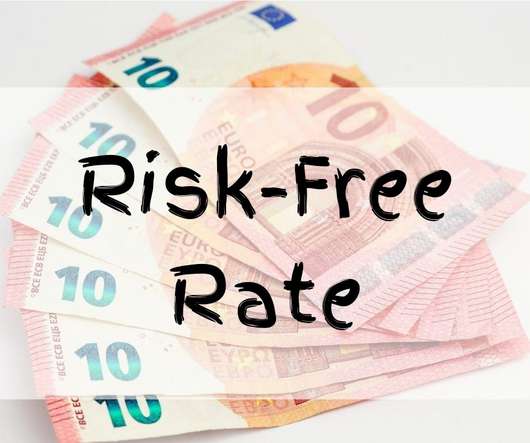
Andrew Stolz
AUGUST 4, 2020
Definition of Risk-Free Rate. The risk-free rate is the minimum rate of return on an investment with theoretically no risk. Government bonds are considered risk-free because technically, a government can always print money to pay its bondholders. It is also the rate that provides an investor with some return and some compensation for future inflation.
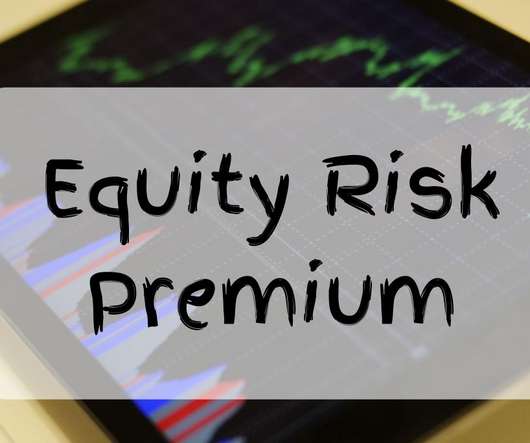
Andrew Stolz
AUGUST 4, 2020
Definition of Equity Risk Premium. It is the difference between expected returns from the stock market and the expected returns from risk-free investments. What Impacts the Equity Risk Premium? Market expected return: Stock prices are influenced by internal factors (management), economic factors, political factors, demand, and supply, etc. Dividends .

Andrew Stolz
AUGUST 4, 2020
Definition of Time Value of Money (TVM). Time value of money describes how the sum of money that you hold currently is worth more than the equivalent sum in the future. This is mainly because there is there are risks associated with receiving future value, but current cash in your hand doesn’t have those risks. Inflation , a rise in the general price level of goods and services, is one of those risks.

Andrew Stolz
AUGUST 6, 2020
Definition of Modern Portfolio Theory. A theory presented in 1952 by Harry Markowitz on how risk-averse investors can create portfolios to maximize the return on investments based on the optimal levels of risk. It can also be used to create a portfolio to minimize the level of risk based on the specified amount of expected return. It optimizes mean-variance (In MPT mean=return, variance=risk), which describes the impact that capital allocations on assets have on the expected risks and returns of
Let's personalize your content